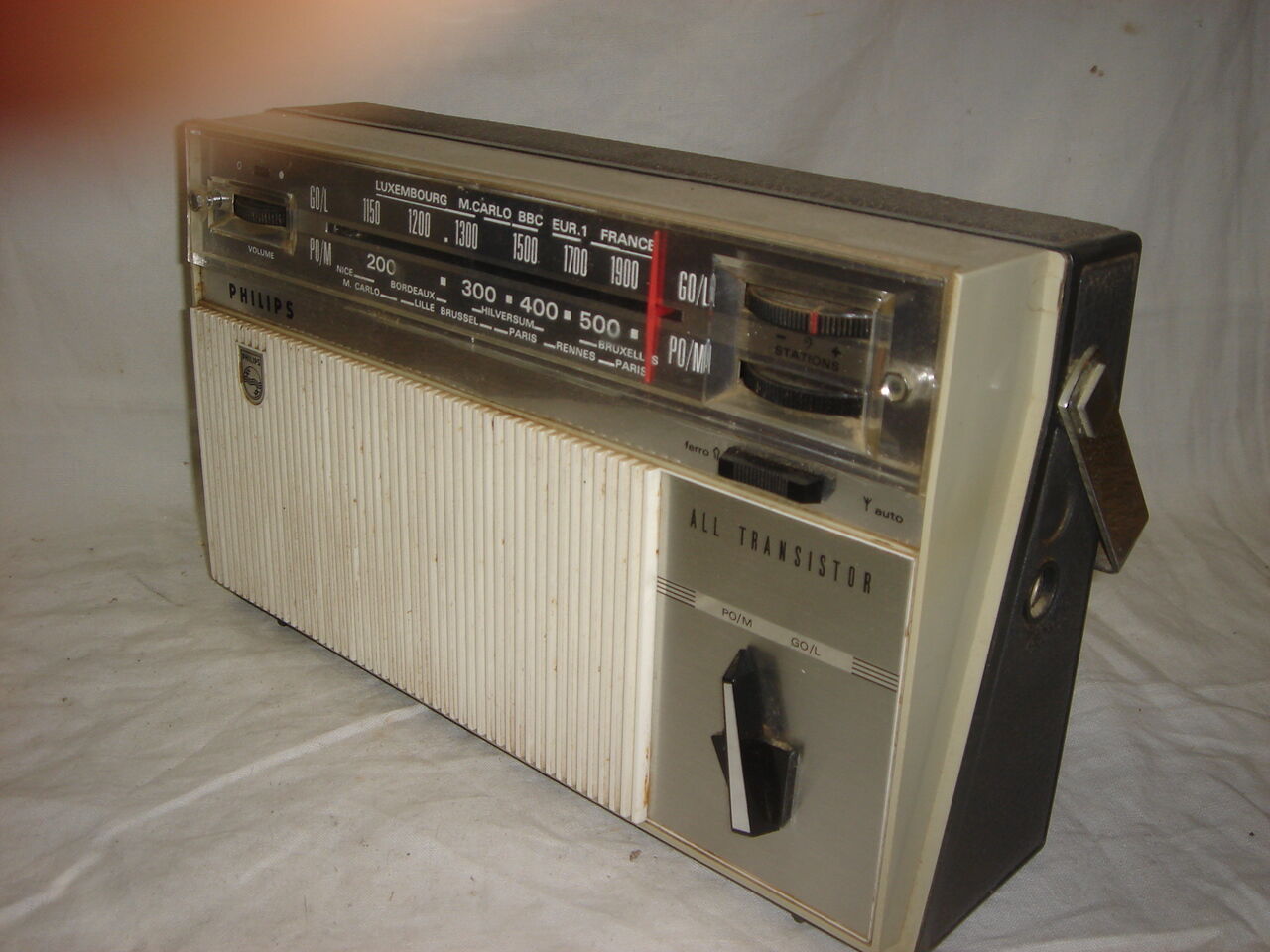

There don't appear to be lights behind the tuning scale, probably because of the extra current drain that would place on the batteries, but that's a shame since the scale would light up nicely.

Underneath the tuning scale is a covered panel with the speaker behind, and there is an external aerial socket on one side and the MW/LW waveband switch on the other side. There is a nice big tuning scale at the front of the set with volume and tuning controls at each end. I think this is a very attractive design.
#1960s transistor radio portable
It probably doesn't need saying, but the HMV manufacturer is also known as His Masters Voice, which is a very well known name in the history of audio recording and electronics.Īlthough the HMV 1420 can be said to be portable because it has a handle fixed to the top, it also has a reasonable sized speaker, and the upright design makes it very usable as a desktop model as well. The gallery below shows some pictures of the HMV 1420 and it's general construction technique HMV 1420 Transistor radio Description Pictures of the HMV 1420 Transistor radio It's probably going to be expensive to buy original style replacement batteries, so I may buy some AA battery holders that take 4 batteries and fix them to the bottom of the case, so modern AA batteries can be used instead. I haven't connected power to the radio yet because I don't have batteries, but I can see from a diagram on the back of the set that it takes two Ever Ready PP1 batteries, which seem to be 6v with stud terminals. There is also a touch of rust on the steel plate behind the tuning scale, but that shouldn't really effect the radio operation in any way. At some time the ferrite rod that the aerial coils are wound around has broken in two places, so I'll need to see if that can be glued back together. The other issue which I can see needs to be repaired is the internal aerial which is fixed to L brackets on the top of the cabinet.

Photo Category Major categories of the photos.
#1960s transistor radio movie


 0 kommentar(er)
0 kommentar(er)
